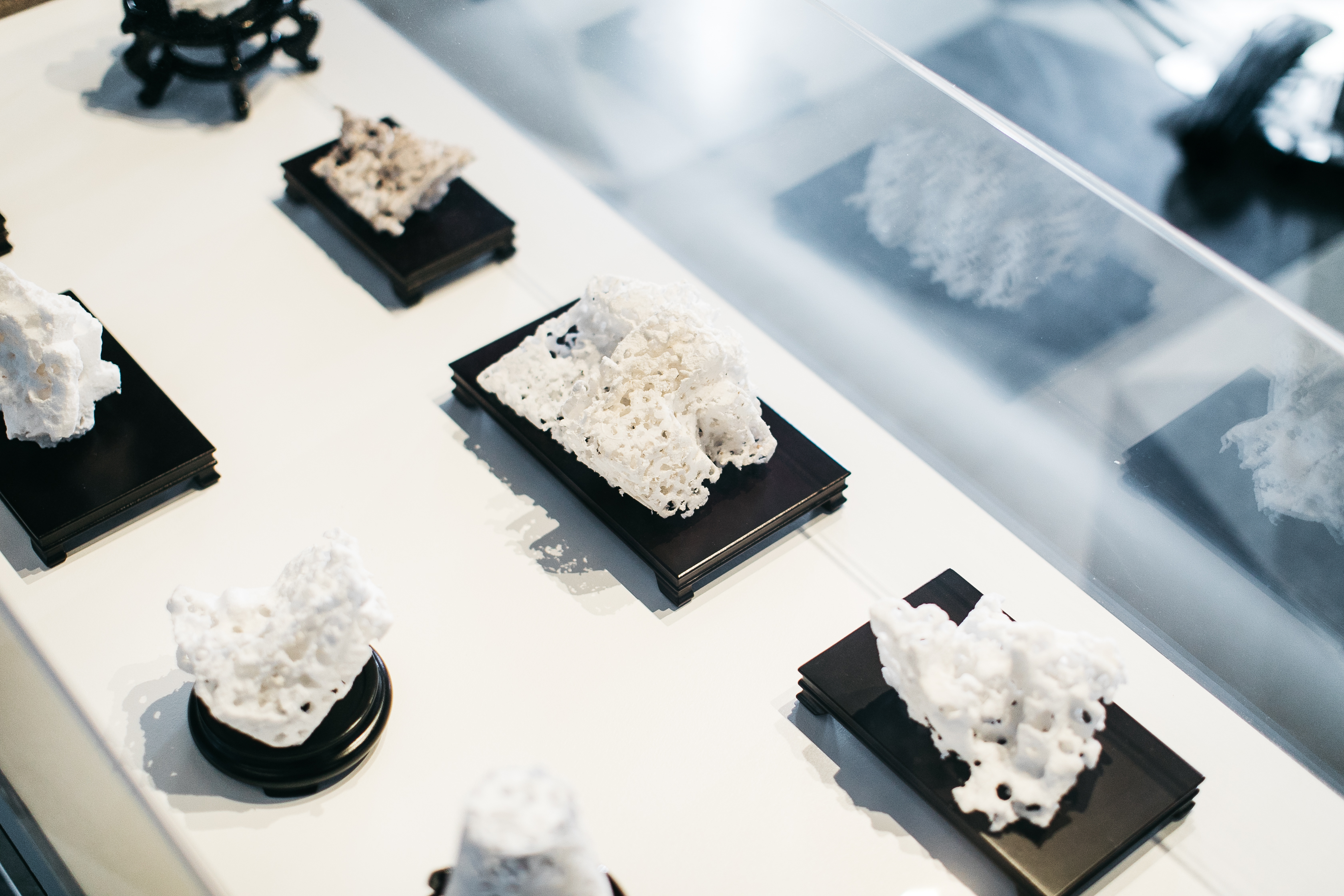Plastivore
Styrofoam (expanded polystyrene) is a difficult to recycle component of the global waste stream and a major component of both marine and terrestrial pollution. The common mealworm (Tenebrio molitor) has the amazing ability to biodegrade styrofoam via symbiotic organisms that live in its gut. I worked with students at Parsons over the past few semesters to develop protocols to demonstrate this process. Pictured here are some examples of partially degraded Styrofoam objects that have been exposed to the mealworms for a while. As objects of contemplation, they are reminiscent of the Scholar’s Stones (pinyin: gõngshí) that have long been celebrated in China and Japan.
Here is the link to the Science Gallery's page where the work was on display in 2018.
https://dublin.sciencegallery.com/ledges/exhibits/plastivore/
Slide Show:
Mealworms doing their thing
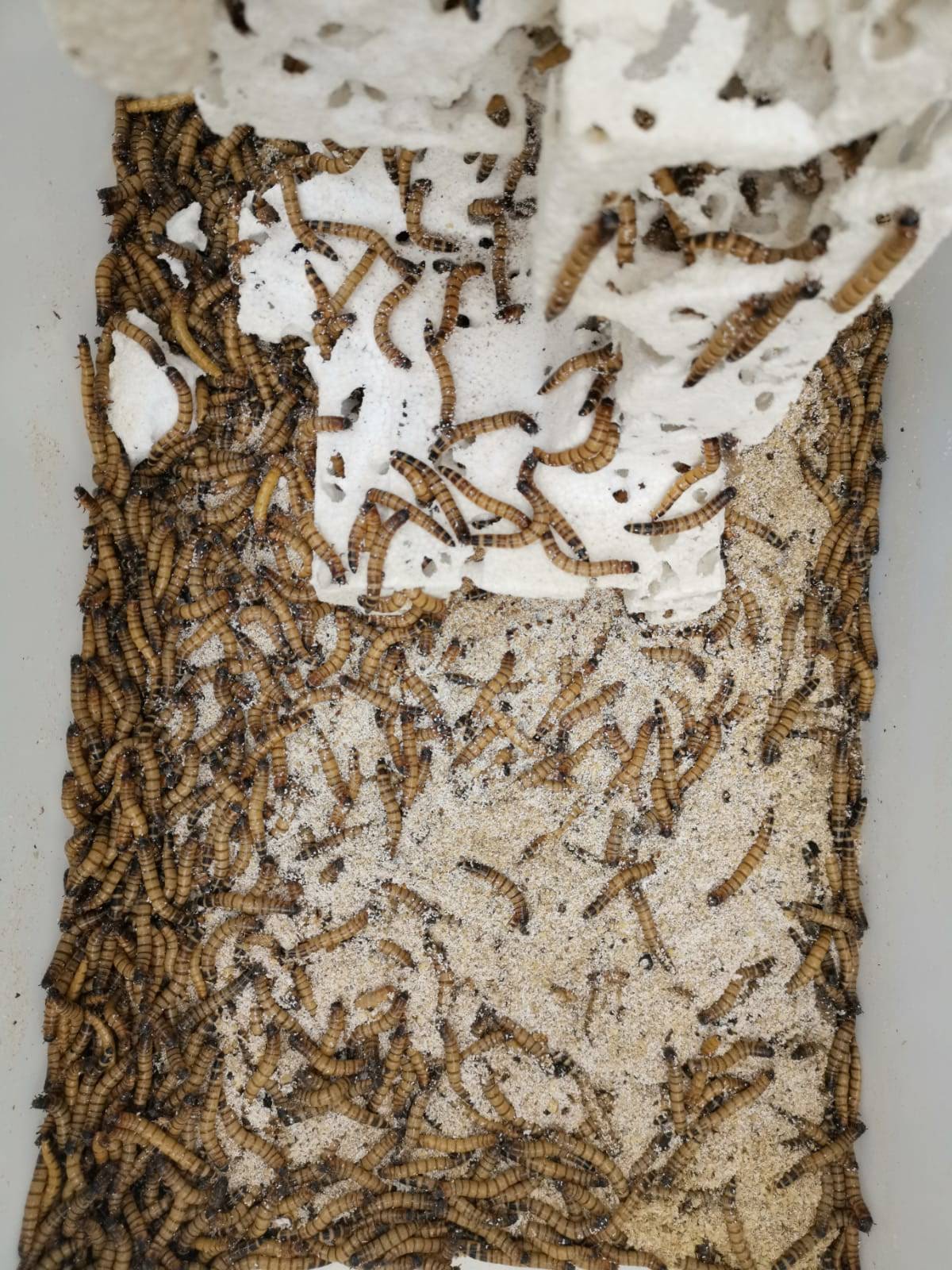
(photo courtesy of Nicole Cleary and Science Gallery Melbourne)
Installation View in window
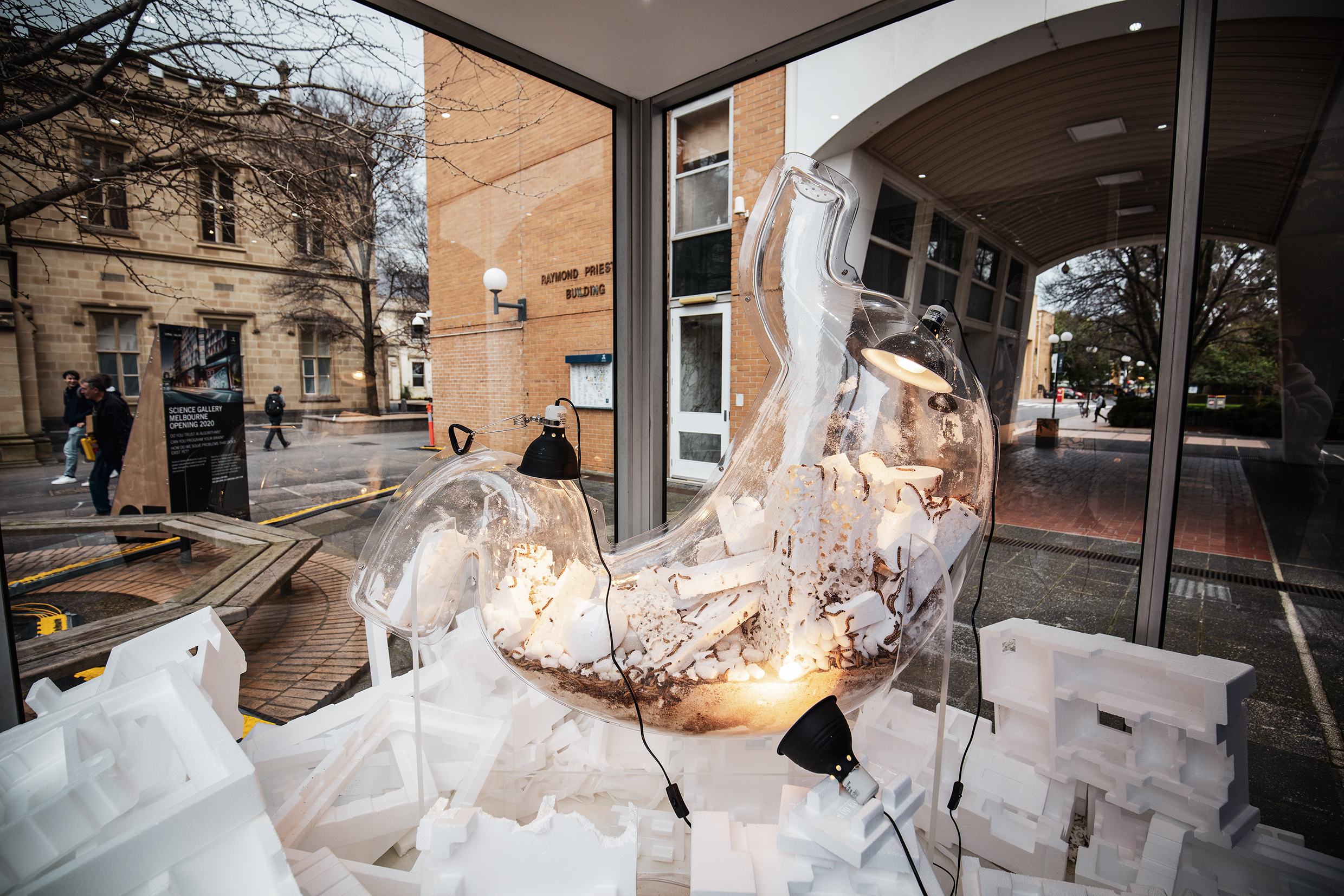
(photo courtesy of Nicole Cleary and Science Gallery Melbourne)
Installing
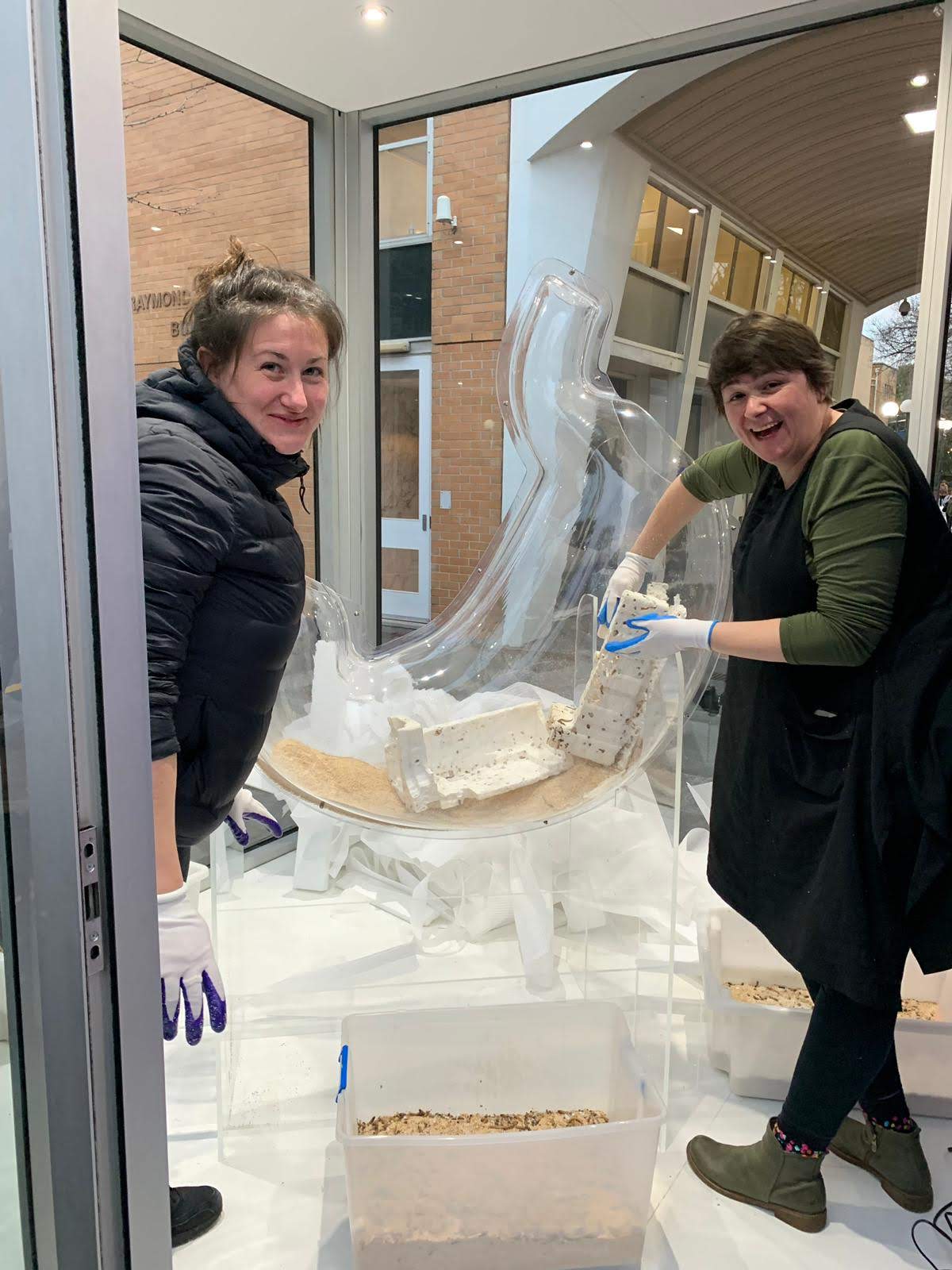
(photo courtesy of Nicole Cleary and Science Gallery Melbourne)
Melbourne Installation View
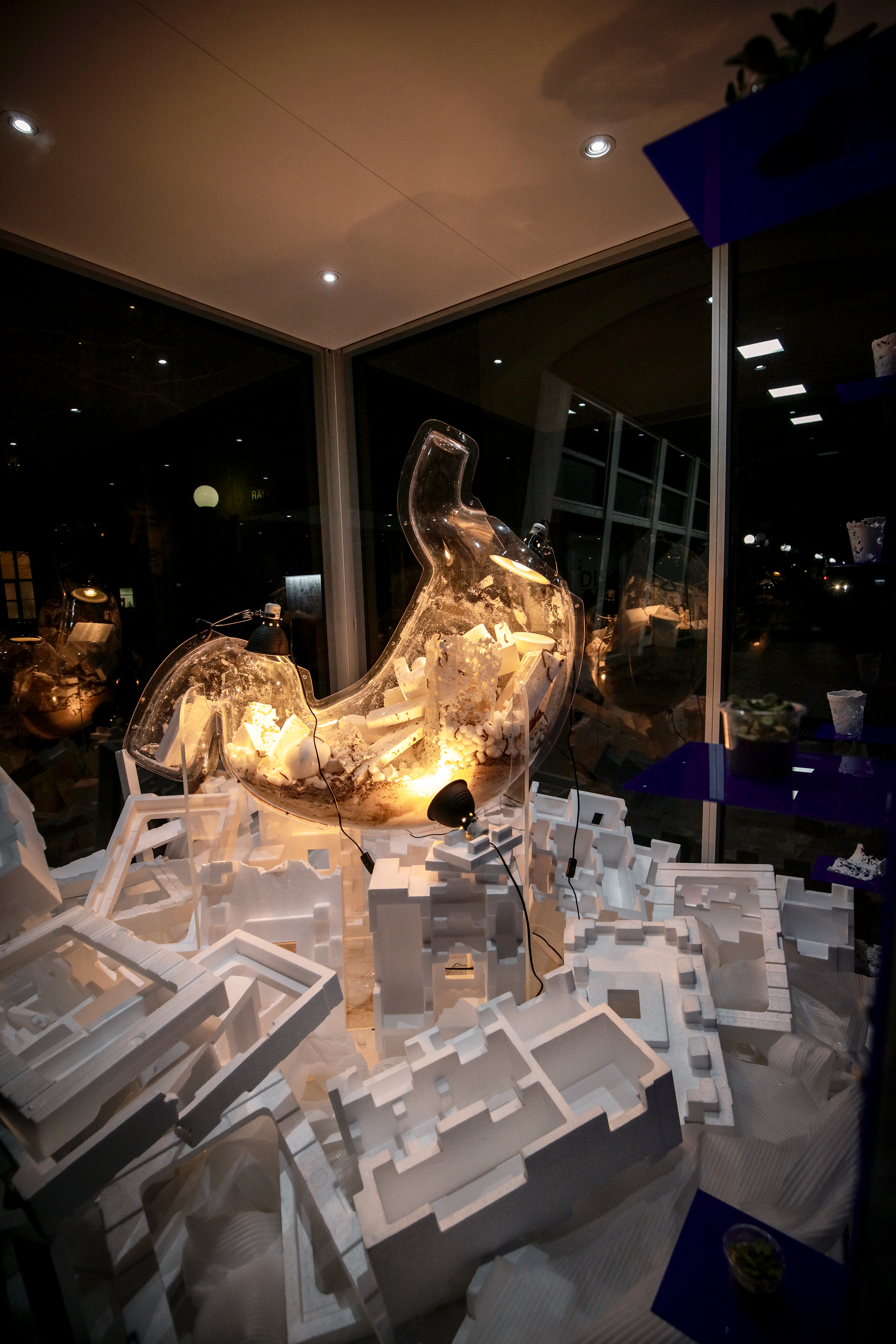
(photo courtesy of Nicole Cleary and Science Gallery Melbourne)
Plastivore Melbourne Stomach 1
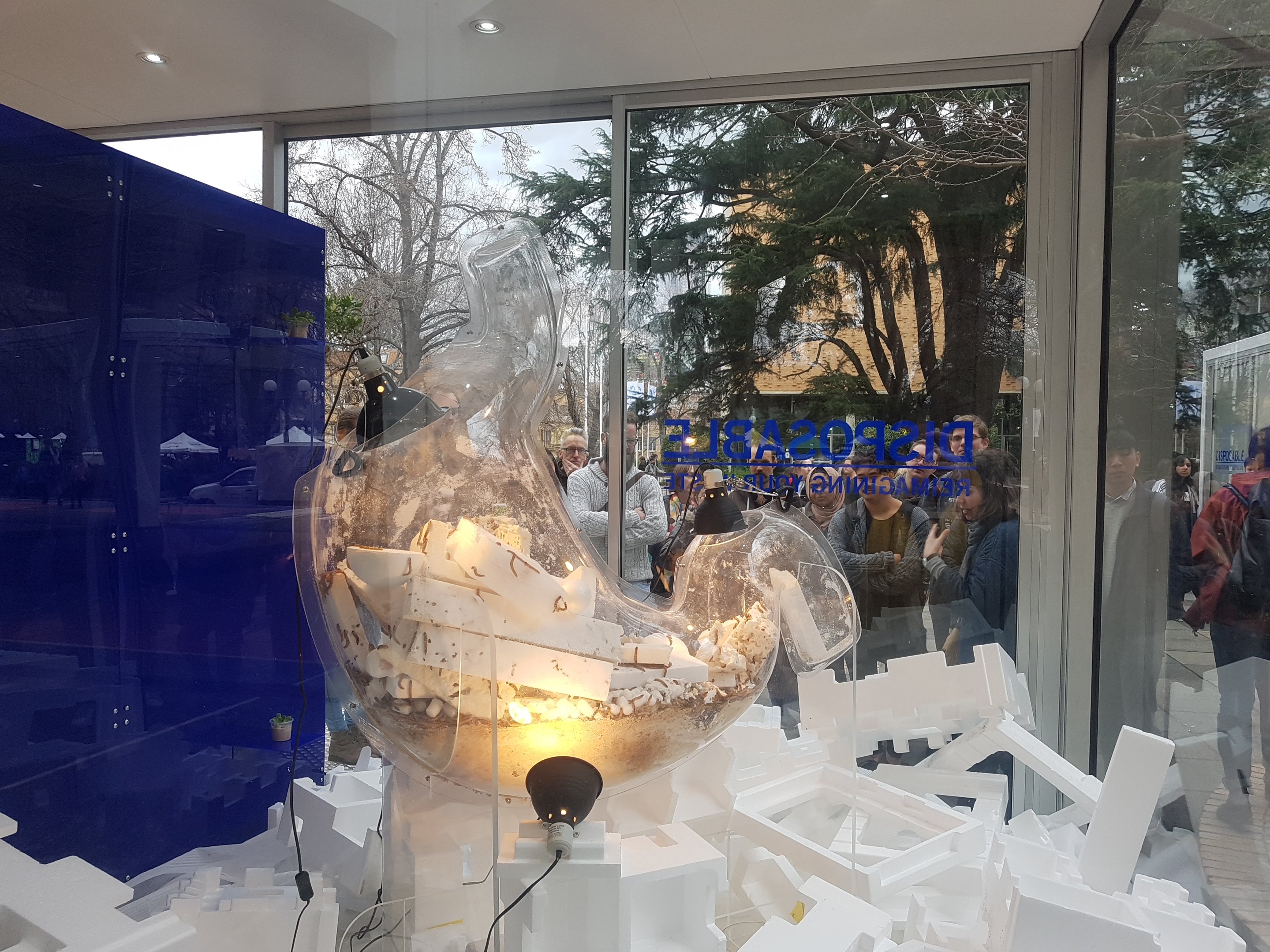
(photo courtesy of Nicole Cleary and Science Gallery Melbourne)
Stomach
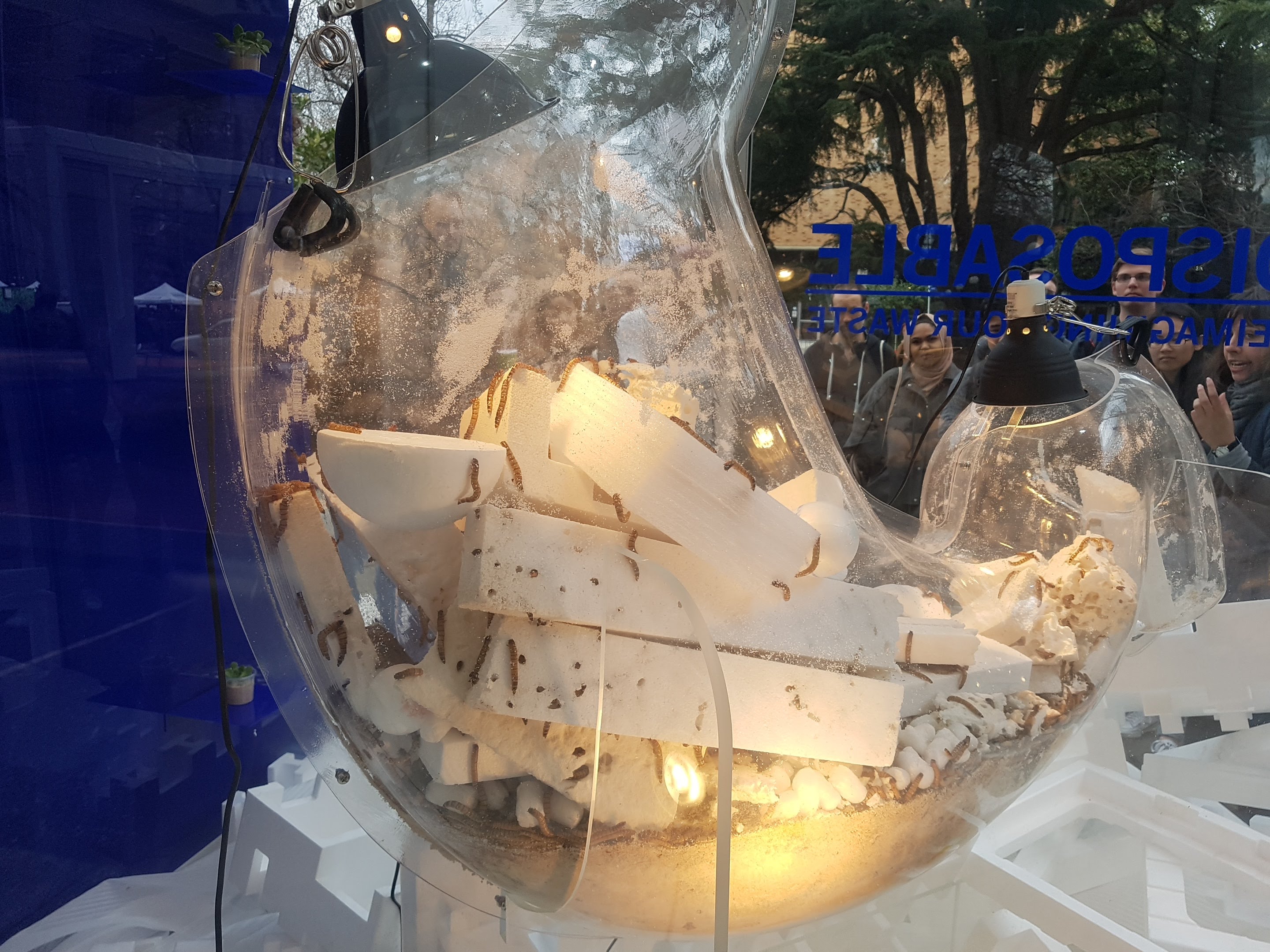
(photo courtesy of Nicole Cleary and Science Gallery Melbourne)
Styrofoam for feeding worms
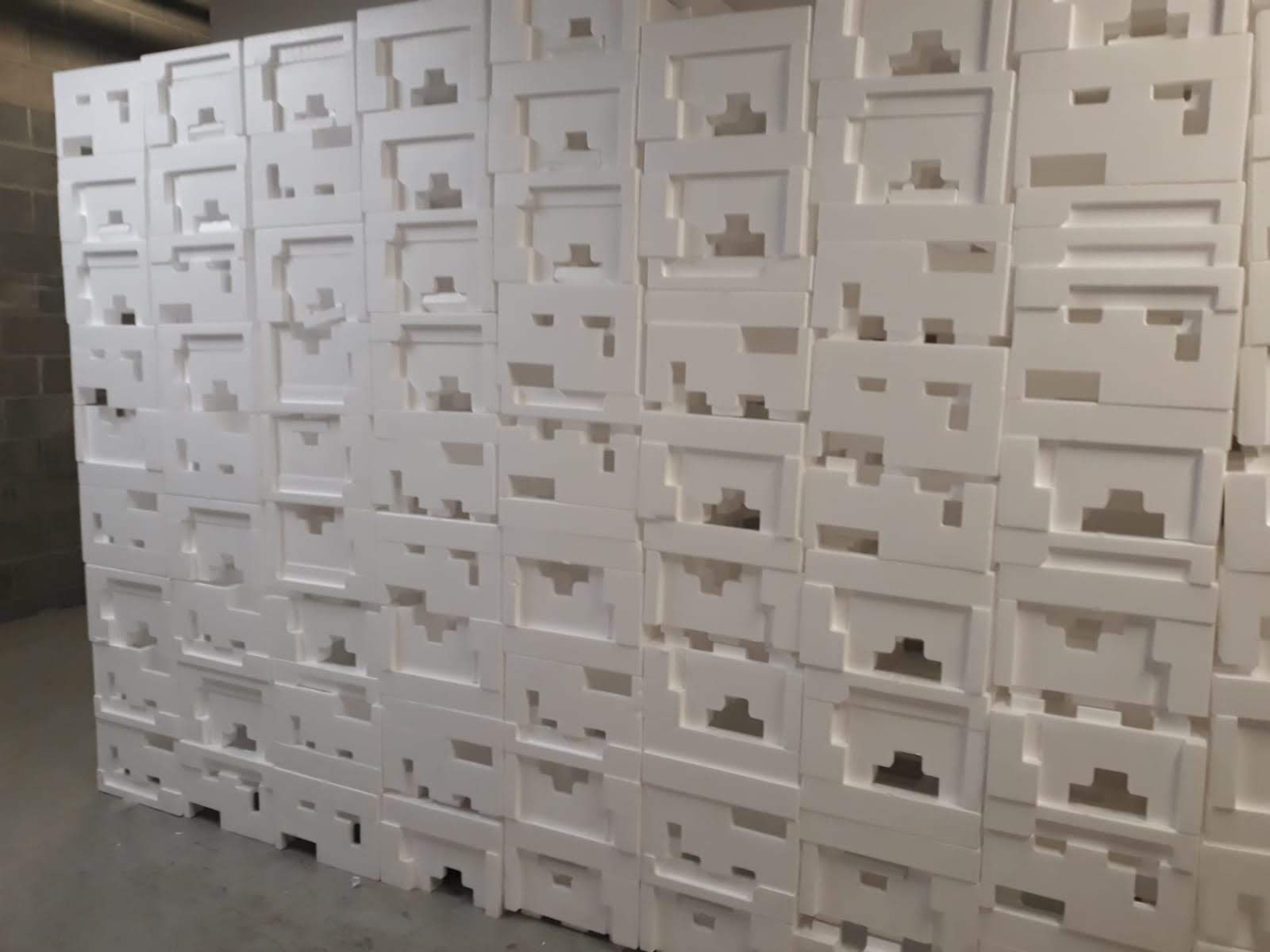
(photo courtesy of Nicole Cleary and Science Gallery Melbourne)
Vitrine 2
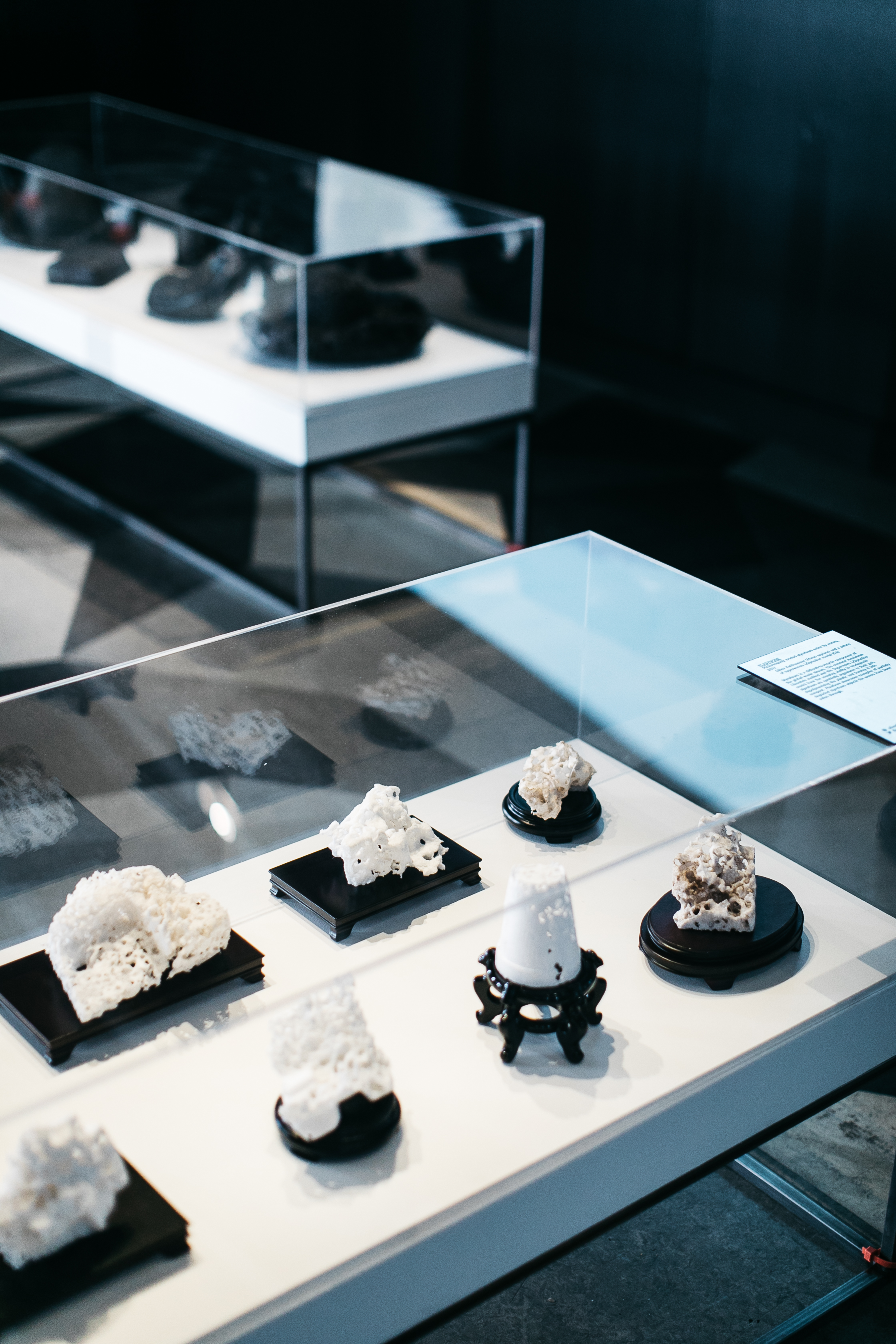
Vitrine 3
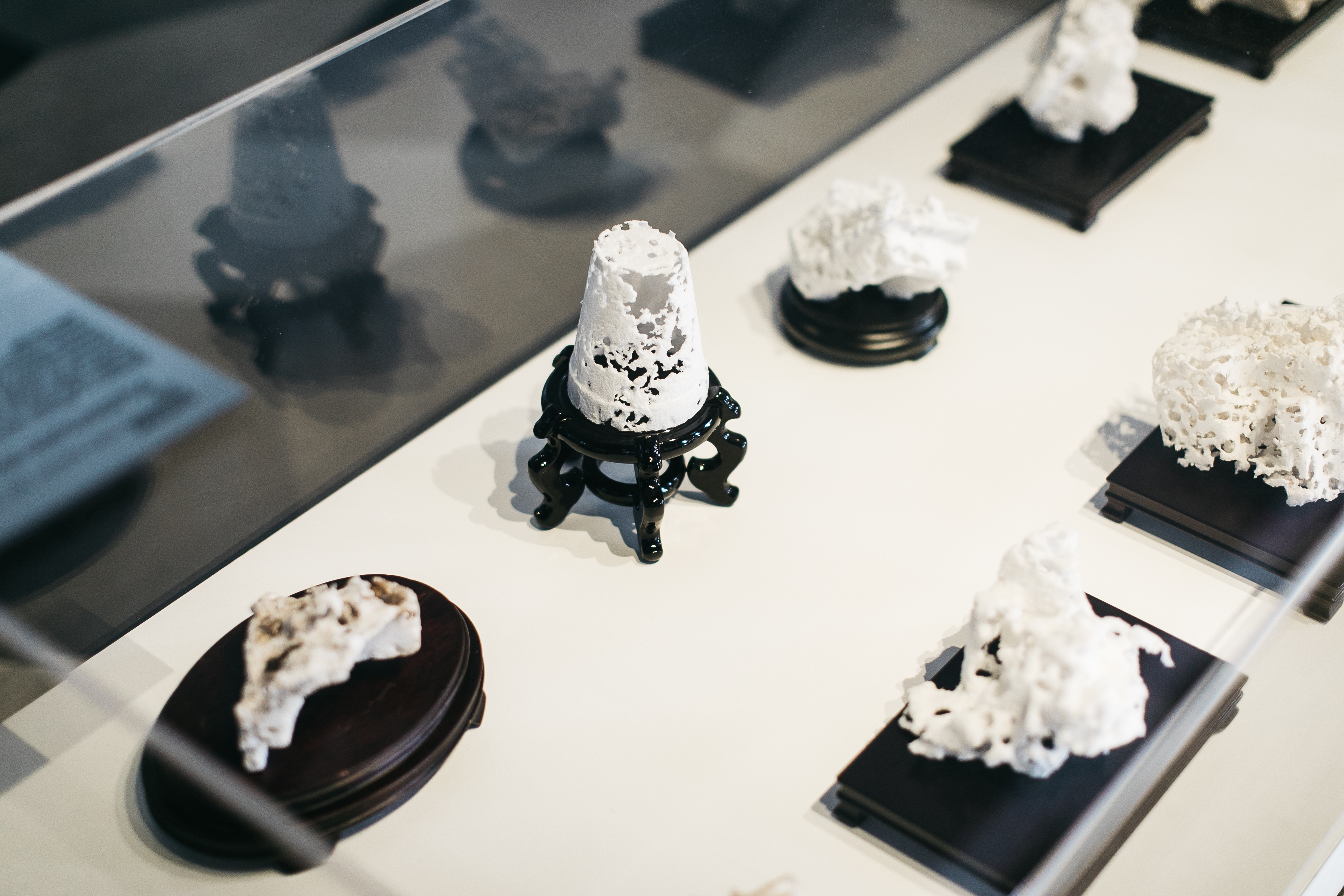
Vitrine_1
